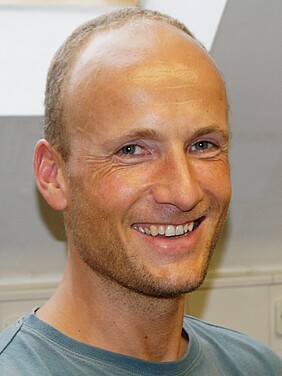will take place on Tuesday, June 28, 2016 from 17:15 to 18:15 hours in CBBM, Ground Floor, Room 50/51.
Host: Prof. Hendrik Lehnert
Department of Internal Medicine I
Universität zu Lübeck
Abstract
Processing and intermediate metabolism of macronutrients are essential components of any life. Facultative or obligatory conversion of carbohydrates as well as fatty and amino acids into readily available energy equivalents like ATP are tightly regulated. Our interest is focused on the role of specific amino acids 1 and glucose metabolites 2 on nematodal and murine lifespan. Downstream oxidative metabolism of fatty and amino acids, as well as glycolytic derivatives like pyruvate occurs in the mitochondria. Reactive Oxygen Species (ROS) are considered inevitable by-product of mitochondrial metabolism, and are known to exert diverse signaling roles since the late 1990ies 3. We and others have shown since then that increased ROS formation is required for extension of C. elegans lifespan in states of calorie restriction 2,4, impaired insulin/IGF-1 signaling in daf-2 mutants 5, inhibition of components of the respiratory chain 6-9, and lastly sirtuin/sir-2.1 signaling 10. Conversely, supplementation of antioxidants 2,4,5,8-10 or overexpression of ROS-detoxifying enzymes 11 to impair ROS signaling blocks the lifespan-extending capabilities of the aforementioned interventions and genetic modifications. These health-promoting roles of ROS have been named mitohormesis 4,12,13 and also apply to humans 14.
References:
- Mansfeld, J. et al. Branched-chain amino acid catabolism is a conserved regulator of physiological ageing. Nat Commun 6, 1-12 (2015).
- Weimer, S. et al. D-glucosamine supplementation extends lifespan of nematodes and of ageing mice. Nat Commun 5, e3563 (2014).
- Chandel, N. S. Evolution of Mitochondria as Signaling Organelles. Cell Metab 22, 204-206 (2015).
- Schulz, T. J. et al. Glucose restriction extends Caenorhabditis elegans life span by inducing mitochondrial respiration and increasing oxidative stress. Cell Metab 6, 280-293 (2007).
- Zarse, K. et al. Impaired insulin/IGF1-signaling extends life span by promoting mitochondrial L-proline catabolism to induce a transient ROS signal. Cell Metab 15, 451-465 (2012).
- Yang, W. & Hekimi, S. A mitochondrial superoxide signal triggers increased longevity in Caenorhabditis elegans. PLoS Biol 8 (2010).
- Durieux, J., Wolff, S. & Dillin, A. The cell-non-autonomous nature of electron transport chain-mediated longevity. Cell 144, 79-91 (2011).
- Schmeisser, S. et al. Neuronal ROS signaling rather than AMPK/sirtuin-mediated energy sensing links dietary restriction to lifespan extension. Molecular Metabolism 2, 92-102 (2013).
- Schmeisser, S. et al. Mitochondrial hormesis links low-dose arsenite exposure to lifespan extension. Aging Cell 12, 508-517 (2013).
- Schmeisser, K. et al. Role of sirtuins in lifespan regulation is linked to methylation of nicotinamide. Nat Chem Biol 9, 693-700 (2013).
- Doonan, R. et al. Against the oxidative damage theory of aging: superoxide dismutases protect against oxidative stress but have little or no effect on life span in Caenorhabditis elegans. Genes Dev 22, 3236-3241 (2008).
- Yun, J. & Finkel, T. Mitohormesis. Cell Metab 19, 757 - 766 (2014).
- Ristow, M. Unraveling the truth about antioxidants: Mitohormesis explains ROS-induced health benefits. Nat Med 20, 709-711 (2014).
- Ristow, M. et al. Antioxidants prevent health-promoting effects of physical exercise in humans. Proc Nat Acad Sci 106, 8665-8670 (2009).
CV
Michael Ristow received his MD from University of Bochum in Germany in 1996 and continued the postdoctoral training from 1997 to 1999 at Joslin Diabetes Center of Harvard University. He holds board certification in Internal Medicine. Since 2013 he is Professor of Energy Metabolism at ETH Zürich.
Michael Ristow’s research is focused on the biochemical and molecular basis of longevity — in particular the role played by mitochondria in lifespan regulation and prevention of metabolic diseases. Contrary to the widely re-iterated Free Radical Theory of Aging, Ristow was the first to show that the health-promoting effects associated with low caloric intake, physical exercise and other lifespan-extending interventions like sirtuin signaling are caused by increased formation of Reactive Oxygen Species (ROS) within the mitochondria, causing a vaccination-like adaptive response that culminates in increased stress resistance and extended longevity, a process called mitohormesis. He works with the roundworm C. elegans and mammalian model organisms, as well as humans.


